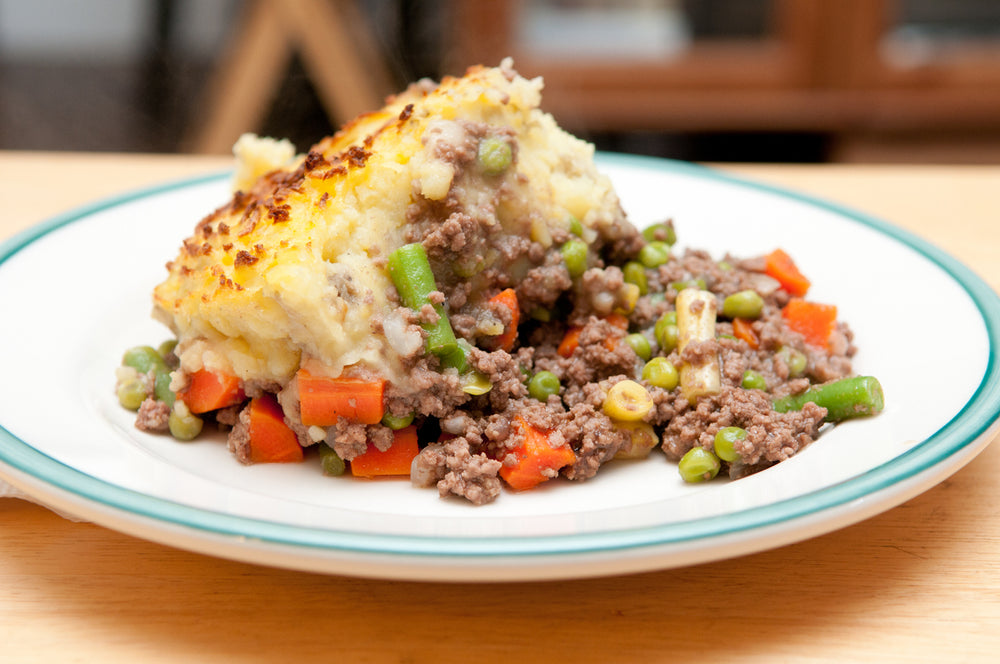The culinary heritage of a nation weaves together a diverse tapestry of flavours, techniques, and ingredients, each strand representing centuries of evolution and cultural fusion. In Britain's context, minced meat is a quintessential embodiment of this rich tradition. With origins that trace back through time, mince meat has undergone a metamorphosis from its modest inception to become a revered and versatile ingredient within British cuisine. In this article, we embark on a delectable journey to uncover the history, recipes, cultural significance, health implications, modern adaptations, traditional preservation, artistic and literary inspirations, global influence, sustainability, and conventional applications of British mince meat. It will serve as a window into mince meat's journey—a transformation that mirrors the evolution of a nation's palate and identity.
Historical Origins of Mince Meat: A Taste of Tradition

The history of mince meat can be traced back to the 11th century. It was when crusaders were returning from the Middle East, they first introduced it to Britain. Initially, mince meat was a savoury mixture of chopped meat, suet, fruits, and spices. Its evolution was closely tied to the availability of ingredients and cultural influences, resulting in its transformation into both sweet and savoury dishes.
Traditional Ingredients and Preparation
The core components of mince meat traditionally included finely chopped meat, suet (raw beef or lamb fat), dried fruits like raisins and currants, apples, candied peel, and a medley of spices such as cinnamon, nutmeg, and cloves. This mixture was often preserved with brandy or other spirits, allowing the flavours to meld and mature.
The preparation of minced meat was a labour-intensive process, often carried out in preparation for festive occasions like Christmas. Families would gather to chop, mix, and pack the minced meat into jars, allowing it to ferment and develop deep, complex flavours. Over time, this practice has evolved into more convenient methods, including store-bought mince meat for various recipes.
Evolution of Mince Meat Recipes

Mincemeat has a broad range of applications in both sweet and savoury dishes. One of the most iconic uses is in mince pies, a staple of British Christmas celebrations for centuries. These small, handheld pies are filled with minced meat, often combined with other ingredients such as dried fruits and spices, and are enjoyed as a delightful holiday treat.
The versatility of minced meat extends beyond pies. Traditional recipes include hearty dishes like Shepherd's Pie, where minced meat is combined with vegetables and topped with mashed potatoes. Mincemeat can also be used as a filling for savoury turnovers, pastries, and even stuffed vegetables.
Cultural Significance and Festive Traditions
Mincemeat is unique in British culture, particularly during the festive season. The tradition of making mince pies and sharing them with family and friends is a cherished custom that has endured for generations. The rich flavours and aromas of minced meat evoke a sense of nostalgia, bringing warmth and togetherness to holiday gatherings.
Modern Adaptations and Fusion Cuisine
While mince meat recipes have retained their traditional charm, modern chefs and home cooks have embraced fusion cuisine, incorporating international flavours and techniques. Mincemeat can now be found in dishes that span curries to tacos, adding a uniquely British twist to global favourites.
Health Aspects and Nutritional Value

Beyond its culinary and cultural significance, minced meat also offers nutritional benefits. Thinner cuts of meat can be used to reduce fat content, and adding dried fruits provides natural sweetness and essential nutrients. While mince pies may be considered indulgent, moderation and mindful ingredient choices can contribute to a balanced diet.
Preserving Tradition in the Modern Era
In today's fast-paced world, preparing traditional minced meat can be time-consuming. However, some still value the art of making mince meat from scratch, upholding the traditions of their ancestors. For many, creating mince meat is a labour of love that connects them to their heritage and brings a sense of nostalgia to the table.
Mince Meat in Art and Literature
The significance of minced meat goes beyond the culinary realm. It is often referenced in British literature and art, symbolizing tradition and festivity. From classic novels to paintings, minced beef has become the nation's cultural fabric.
Global Influences on British Mince Meat
As Britain's culinary landscape continues to evolve, so does its influence on traditional recipes. With global trade and cultural exchange, new ingredients and flavours have found their way into mince meat recipes, reflecting the multicultural nature of contemporary British society.
Mince Meat: A Symbol of Sustainability

In recent years, there has been a growing awareness of sustainable eating. Mincemeat recipes align with this movement, as they often utilise different cuts of meat and various ingredients, reducing food waste and promoting the use of every part of the animal.
Exploring Mince Meat Variations
Mincemeat has not only remained a beloved tradition but has also diversified over time. Different regions and families have developed unique variations of mince meat recipes, adding a personal touch to this centuries-old tradition.
Mince Meat Beyond Borders
While mince meat has strong British roots, it has also transcended national boundaries. Other cultures have adopted similar minced meat preparations, showcasing the universality of this culinary concept and its ability to connect people through shared flavours.

The world of British mince meat is a captivating blend of history, flavours, culinary artistry, cultural significance, and modern adaptations. From its origins as a simple mixture of beef and spices to its place in contemporary global cuisine, minced meat continues to captivate palates and connect generations. Whether you're savouring a classic mince pie during the holiday season, experimenting with modern interpretations, considering its nutritional value, exploring its cultural and artistic references, embracing global influences, or preserving tradition through homemade preparations, the essence of British mince meat remains a delightful and enduring culinary tradition.
Experience the authentic flavours of tradition at GoodWoods. Discover a wide range of premium ingredients, including suet, dried fruits, and spices, sourced to help you recreate the magic of mince meat recipes in your kitchen.


 Bacon & Sausages
Bacon & Sausages
 Baking
Baking
 Beans, Peas, Soups & Tins
Beans, Peas, Soups & Tins
 Biscuits, Crackers & Cookies
Biscuits, Crackers & Cookies
 Candy / Sweets
Candy / Sweets
 Crisps & Snacks
Crisps & Snacks
 Chemist / Pharmacy
Chemist / Pharmacy
 Desserts
Desserts
 Frozen Food
Frozen Food
 Gravy, Stock & Paste
Gravy, Stock & Paste
 Haggis
Haggis
 Indian Sauces, Paste and Pickle
Indian Sauces, Paste and Pickle
 Jams & Preserves
Jams & Preserves
 Poppy Appeal
Poppy Appeal
 Pot Noodles & Super Noodles
Pot Noodles & Super Noodles
 Scone Mix
Scone Mix
 Gluten-Free
Gluten-Free
 Seafood, Fish Paste & Cockles
Seafood, Fish Paste & Cockles
 Tea Accessories
Tea Accessories
 Teapot & Tea sets
Teapot & Tea sets
 Tea For One
Tea For One
 Sugar & Creamer
Sugar & Creamer
 Tableware
Tableware
 Serveware
Serveware
 Plates & Trays
Plates & Trays
 Bowls
Bowls
 Cups & Saucers
Cups & Saucers
 Mugs
Mugs
 Silverware
Silverware
 Dinnerware - Accessories
Dinnerware - Accessories
 Dinnerware - For Pets
Dinnerware - For Pets
 Victoria Eggs - Hand-Drawn UK Homeware
Victoria Eggs - Hand-Drawn UK Homeware
 Jewelry & Accessories
Jewelry & Accessories
 Sale
Sale
 Christmas Crackers
Christmas Crackers
 Christmas Gifts
Christmas Gifts

